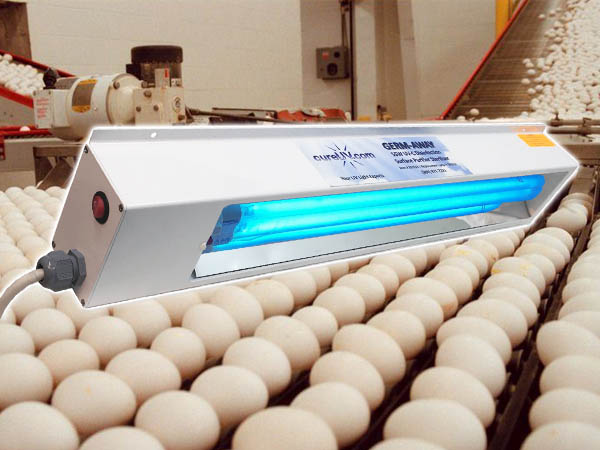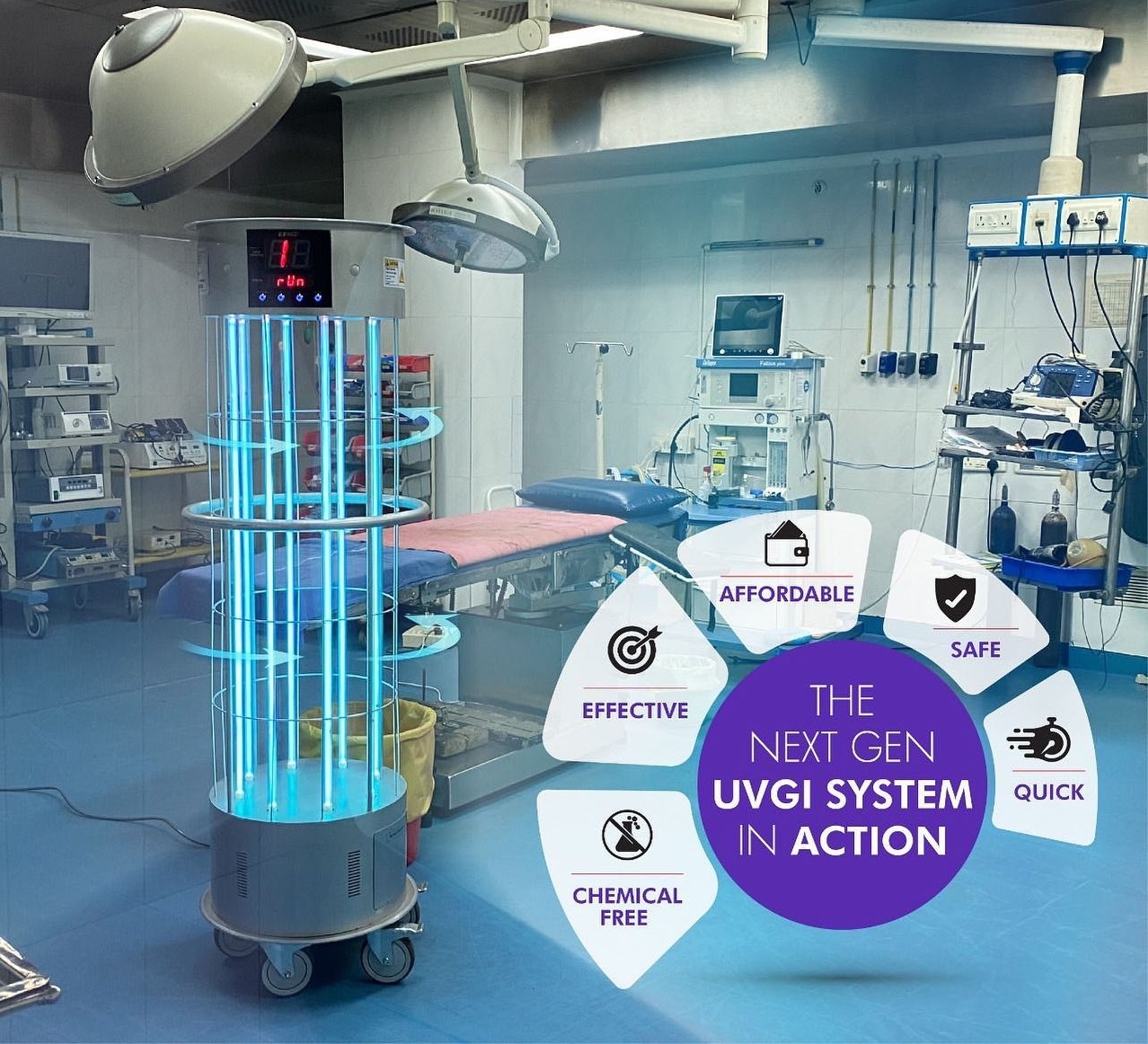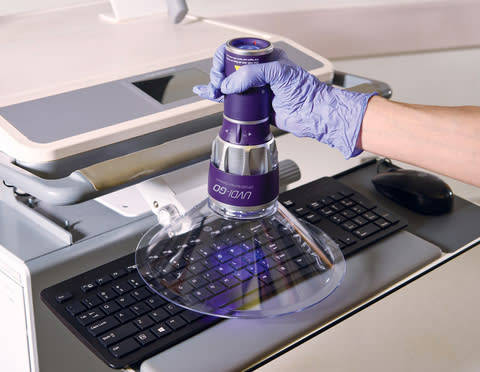Taking Advantage Of the Prospective of UV Disinfection: Safeguarding Wellness and Health
UV disinfection, a technology extensively used in numerous industries, has verified reliable in eliminating dangerous pathogens. From comprehending the devices at play to implementing this technology in our day-to-day lives, this conversation intends to shed light on the potential of UV disinfection and its function in securing our health and health.
Understanding UV Sanitation
UV sanitation is a very efficient and commonly used approach for guaranteeing and eliminating damaging microorganisms health and health. This method makes use of ultraviolet (UV) light to suspend bacteria by damaging their DNA and stopping them from recreating. UV disinfection is particularly efficient against microorganisms, viruses, and other microorganisms that can trigger infections and conditions.
The concept behind UV sanitation is simple yet powerful. When UV light is sent out at a details wavelength, it passes through the microorganism's cell wall and disrupts its genetic material. This process, called photodissociation, leads to the formation of thymine dimers, which prevent the bacterium from reproducing and making it harmless. UV sanitation can be applied in different setups, including water treatment plants, healthcare facilities, food processing sectors, and air purification systems.
One of the benefits of UV sanitation is its capacity to effectively and effectively get rid of a vast array of virus without the need for chemicals or additives. Unlike various other disinfection approaches, such as chlorine or ozone, UV sanitation does not present dangerous spin-offs or chemical residues into the atmosphere. Additionally, UV disinfection is a non-contact procedure, which implies that it does not call for physical call with the microbes, reducing the danger of cross-contamination.

The Scientific Research Behind UV Disinfection
The efficiency of UV disinfection depends on its capability to disrupt the genetic material of microbes, rendering them not able to reproduce and thereby eliminating their dangerous capacity. UV, or ultraviolet, radiation is a type of electro-magnetic radiation with wavelengths shorter than noticeable light. It is classified right into three kinds: UV-B, uv-c, and uv-. UV-C radiation, particularly, has the shortest wavelength and the highest possible energy. Due to the fact that it can permeate the cell walls of microbes and damage their DNA or RNA., this high-energy UV-C radiation is most effective in disinfection applications.
When microbes are subjected to UV-C radiation, the energy is soaked up by their genetic product, triggering bonds to damage and creating chain reactions that interrupt their capability to replicate. This protects against the microbes from replicating and spreading out infection. UV sanitation is especially reliable against fungi, bacteria, and infections, consisting of typical pathogens such as Escherichia coli, Salmonella, and Flu.
The science behind UV sanitation is sustained by considerable study and studies. It has been revealed that direct exposure to a sufficient dose of UV-C radiation can attain a high level of disinfection, often surpassing 99.9% efficiency in eliminating bacteria. Nonetheless, it is very important to note that the performance of UV disinfection depends on various aspects, including the strength of UV-C radiation, exposure time, distance from the UV source, and the sensitivity of the bacterium to UV radiation.
Applications of UV Sanitation
Given the comprehensive research and effectiveness of UV sanitation in disrupting the hereditary material of bacteria, it is very important to check out the different useful applications of this innovation. UV sanitation has verified to be a beneficial device in a vast array of industries where preserving a risk-free and clean setting is vital.
One significant application of UV disinfection is in healthcare settings. UV light can be used to disinfect surface areas, equipment, and even the air in hospitals and medical facilities. This aids to reduce the threat of healthcare-associated infections and guarantees a safer atmosphere for clients and healthcare employees.
Another important application is in the food and drink market. UV sanitation is used to deal with water and eliminate damaging microorganisms, such as E. coli and Salmonella, from the manufacturing procedure. uv surface disinfection. This guarantees the safety and security and top quality of the products we take in
UV sanitation is likewise widely made use of in water treatment plants and wastewater therapy facilities. It is an efficient technique for destroying harmful germs, viruses, and parasites that can be present in water resources. This helps to give tidy and safe alcohol consumption water to communities and secure the environment from air pollution.
Additionally, UV sanitation is used in the pharmaceutical industry to sanitize equipment and maintain the honesty of items. It is also made use of in labs and research centers to prevent contamination and make sure precise results.
Advantages of UV Disinfection Modern Technology
One notable benefit of utilizing UV sanitation technology is its ability to effectively eradicate microorganisms without using rough chemicals. This is especially useful in different settings, such as health care centers, water treatment plants, and food handling sectors, where the presence of unsafe virus postures a considerable risk to public wellness and safety and security.
Unlike typical sanitation approaches that depend on chemicals like chlorine or ozone, UV sanitation technology utilizes ultraviolet light to target and ruin the DNA of microbes, effectively neutralizing their capability to reproduce and create infections. This process not just removes the requirement for possibly unsafe chemicals however likewise reduces the threat of why not try this out chemical residue or results staying in the treated setting.

Moreover, UV disinfection innovation is eco friendly. As it does not rely on the use of chemicals, it gets rid of the need for their production, transport, and disposal, lowering the general carbon footprint related to sanitation procedures. Additionally, UV sanitation systems have a longer lifespan contrasted to chemical-based techniques, resulting in much less constant replacement and additional lowering waste.
Executing UV Disinfection in Every Day Life
To properly implement UV disinfection in daily life, individuals and companies can integrate mobile UV sanitizing gadgets into their health routines and cleansing methods. These tools are designed to discharge ultraviolet light, which has been shown to eliminate or suspend a large range of microbes, consisting of fungi, viruses, and microorganisms. By utilizing portable UV sterilizing tools, individuals can decontaminate generally touched objects and surfaces, such as cell phones, doorknobs, secrets, and laptop computers, minimizing the risk of spreading out bacteria and infections.
Along with integrating mobile UV disinfecting tools, it is essential to comply with proper guidelines and recommendations for reliable UV sanitation. This consists of guaranteeing that the gadget is used appropriately and for the advised period to achieve ideal sanitation outcomes. It is likewise vital to focus on safety measures, such as wearing protective eyeglasses and preventing visit straight exposure of the UV light to the skin.

Moreover, companies can implement UV disinfection innovation in different setups to improve hygiene techniques. Hospitals and health care centers can make use of UV disinfection robotics to disinfect client rooms, running movie theaters, and various other high-touch areas. Food processing sectors can incorporate UV disinfection systems right into their manufacturing lines to improve food security and stop contamination.
Final Thought
In verdict, UV sanitation modern technology holds fantastic prospective in safeguarding health and health. With its countless advantages, UV sanitation is a useful tool for keeping a tidy and healthy and balanced atmosphere.
Unlike various other disinfection approaches, such as chlorine or ozone, UV sanitation does not introduce unsafe spin-offs or chemical residues into the environment. It is important to keep in mind that the efficiency of UV click this site disinfection depends on different elements, including the strength of UV-C radiation, direct exposure time, distance from the UV source, and the sensitivity of the microorganism to UV radiation.
An additional advantage of UV sanitation innovation is its ability to supply rapid and continual sanitation. Unlike guidebook cleansing methods, which can be taxing and require considerable labor, UV disinfection systems can be automated and run constantly, ensuring regular disinfection without human intervention.To successfully apply UV disinfection in day-to-day life, companies and individuals can include portable UV sanitizing devices into their hygiene regimens and cleansing techniques.